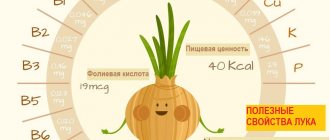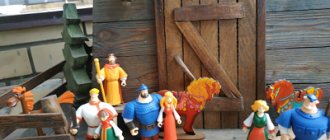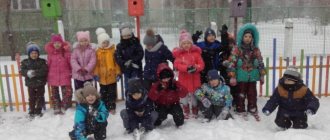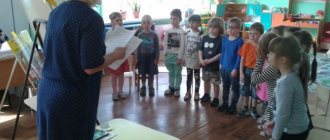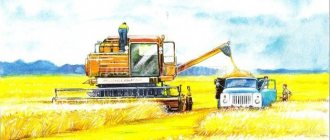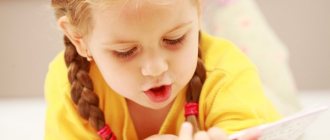Project “A book is your best friend”
Goryunova E.K. Project “The Book is the Best Friend” // Sovushka. 2019. N2 (16). URL: https://kssovushka.ru/zhurnal/16/ (access date: 02/05/2022).
Order No. 383056
Project manager: Teacher of the highest qualification category Elena Konstantinovna Goryunova.
Age of participants: 5 – 6 years.
Composition of the project group: Teachers, children, parents, social partners - library staff.
Project type:
Duration: Long-term (1 year)
According to the composition of participants: Group, frontal.
Project type: Social, educational, creative.
Relevance of the project:
Raising a comprehensively developed child is the main goal of modern preschool education. To achieve this goal, it is important to involve additional educational resources in the process of personality formation.
Interaction with society became such an educational resource. For ourselves, we chose a partnership with the library, since the problem of children's reading is especially relevant in our time. Children have little interest in books, replacing them with watching TV shows, computer games, etc.
One of the main tasks of educators and librarians is to instill in children a love of books and reading, to teach them to appreciate and cherish books as a source of knowledge.
Objective of the project:
Formation of stable interest of preschoolers in books.
Project objectives:
— increase the effectiveness of work to develop children’s interest in books in the interaction of participants in the educational process: children, teachers, library staff and parents;
— expand children’s knowledge about the library and its employees;
- to form a stable interest of preschoolers in the book;
— to cultivate in children a love for books and a caring attitude toward them;
- develop attention, thinking, memory, imagination;
— introduce parents to methods and techniques for introducing children to books.
Expected results of the project:
- develop children’s interest in communicating with books;
— expand children’s ideas about the importance of the library in human life;
— increase the competence of family members in raising a literate reader;
— establishing close cooperation between social partners: the library, teacher and parents in matters of nurturing an interest in books and reading among older preschoolers.
Project implementation:
Stage I – preparatory.
— choice of topic;
— invitation to participation of project partners;
— drawing up a plan for joint activities with social partners;
- conducting conversations with children and parents on this topic;
— a selection of questionnaires for parents;
— preparation of material for the implementation of the project.
Stage II is the main one.
- “Hello library!” - excursion to the library.
- “Library” is a role-playing game in a group.
- “A book is your best friend” - reading fiction.
- “How often do you read books to your children?”, “What do we read to our children at home?” - survey of parents.
- “My Favorite Fairy Tale” is a drawing competition.
- “How to educate a reader?” - moving folder for parents.
- “Children's Book Week” is a theatrical performance.
- “Tales of K.I. Chukovsky" - an exhibition of children's books.
- “Workshop for Books” is a book repair workshop.
- Creating homemade books - master class with parents and children.
- “Reading together” - parents reading their favorite books.
- Looking at illustrations and pictures.
- Staging of K.I. Chukovsky’s fairy tale “The Fly Tsokotukha” - showing the fairy tale by library staff.
- “The library is your best friend” - an excursion to the library.
- Conversations about books, asking riddles.
Stage III is the final stage.
Conducting a repeated survey of parents.
Design of the themed album “My Favorite Fairy Tale”.
Presentation design for the project: “Together with the book I grow.”
Conclusion:
Thanks to cooperation with the children's library, children have developed an interest in books as a source of many interesting and educational things.
Parents began reading to their children more often and visiting the library with their children.
Educational and creative project “The Book is Our Friend” for older children
Educational and creative project “The Book is Our Friend” for children in the senior group of kindergarten.
Author: Ivanova Anna Aleksandrovna, teacher of the State Budgetary Educational Institution kindergarten No. 77 of the Primorsky district of St. Petersburg. Project name : “The book is our friend.” Type of project : educational, creative, group. Project participants : pupils of the senior group “Rainbow”, kindergarten No. 77 of the Primorsky district of St. Petersburg and their parents. Project implementation period : 3 months.
I Introduction.
Relevance: Modern children, unfortunately, are less and less interested in books. They are simply not interested in spending the evening reading a book if there is an alternative in the form of a screen or monitor. And it also happens that I would be glad, but there is nothing to read, because there are simply no books at home. Due to the lack of experience with a book, it also results in rough handling. The child’s vocabulary suffers, imagination does not develop, and there is no interest in learning to read. What fate awaits paper books? The forecasts are disappointing, to my deep chagrin. And so that paper books do not disappear, it is simply necessary to bring children and books closer together; Help children love reading. Environmental protection issues are also important. But it is in childhood that issues of environmental culture need to be laid down. Why collect waste paper? How can old newspapers save a forest? We will try to find answers to all these questions in our project. The goal of the project: to educate children to love and respect books. Objectives: -Introduce children to: 1) types and purposes of books; 2) the paper production process; 3) book printing. — Provide knowledge about the stages of creating a book; clarify the role of writers, illustrators and designers. — Teach children to create a book with their own hands. — Develop creativity, imagination, fantasy. — Develop a caring attitude towards books made of paper. — Cultivate a love of books and the printed word. Predicted result: - Children have an idea of paper production. — Children’s caring attitude towards books and magazines. — Children's interest in books. Forms and methods of work: conversations, experimental activities, reading fiction, watching videos, drawing, writing stories and fairy tales. Working with parents: - Encouraging adults to read books to children at home every day. — Information about the location of the nearest children's library and assistance in enrolling a child in it. Product of project activity: 1) Creation of paper from waste paper. 2) Exhibition of drawings “At a paper processing factory”. 3) Creation of their own book by each of the students. Presentation of the project: at the pedagogical council;
holding an exhibition of books and drawings in a group. II. Project implementation
STAGE 1: preparatory.
1.Goal: Consider the books that are in the group. What types of books are there? What are they for?
Children find out that books have different appearances and different purposes. 2. Plot situation: A doll with books comes to visit the children.
Purpose: Find out from the appearance of the books how children handled them. Discuss the rules of behavior with books.
STAGE 2: main.
1. Purpose: viewing and discussing a video demonstrating the production of paper from waste paper at a paper processing plant.
2.Purpose: experiment on obtaining paper from old newspapers. Tasks: -soak small pieces of newspaper in water overnight.
-Mix soaked newspaper and water in a blender. The result is pulp, i.e. cellulose fibers with water.
-pour the pulp into a shallow, wide bowl and lower the sieve into it (a protective screen for splashes).
-after 5 minutes, take out a sieve covered with pulp and let the excess water drain for 15 minutes.
- place the sieve between two layers of towels and iron with a hot iron until the water stops evaporating.
-separate the wet sheet of paper from the sieve and leave to dry between two dry towels.
Discussion of the results obtained. 3.Purpose: viewing a presentation about printing, discussion. 4.Purpose: consultation of parents about the benefits of reading to children. A story about the nearest children's library and a recommendation to enroll your child there.
STAGE 3: productive activity.
1.Goal: Creating a book. — Composition or retelling of a fairy tale by a child. — Thinking through and sketching illustrations for the book.
— Book cover design. — Production of the finished book by the teacher (typing and printing the text, gluing it to the pages of the book, sewing on the cover). 2. Goal: Drawing according to the child’s plan: “How is paper made?”
II. Summarizing
1. Results obtained:
Children: - Showed great interest in the production of paper from waste paper. Some repeated the experiment at home. — Four children began collecting unnecessary papers at home to take them to a waste paper collection point. — We began to treat books more carefully and took the initiative to glue up all the torn books in the group. — They listen carefully to books being read aloud and show great interest in learning to read independently. — They continue to independently create their own books. Parents: - Several children were enrolled in the library and visit it with their family. — Children's book corners are organized at home, where children can easily access books. 2. Products of project activities: - Exhibition of drawings in a group.
— A presentation of the project was organized at the pedagogical council. — Exhibition of books made by children in a group.
III. conclusions
During the “Book is Our Friend” project, the children got acquainted with the process of paper production; The process of the book's appearance was examined in detail. The children themselves also played the role of authors, illustrators and book designers. The knowledge that the children received during the project unusually stirred up the children’s interest in books. The children became interested in the book and loved spending time in its company. The book truly became a true friend and mentor for the children. This means that the goal of the project was achieved. I would like to end with the words of John Herschel: “Give a person a taste for reading and give him the opportunity to read, and you will inevitably make him happy...”
We recommend watching:
Educational project in kindergarten Project in kindergarten for older preschoolers 5-7 years old on legal topics Project in the senior group of kindergarten Project in the senior group on the topic “Trees and shrubs in spring”
Similar articles:
Project for children of the senior group “Our cheerful garden”
